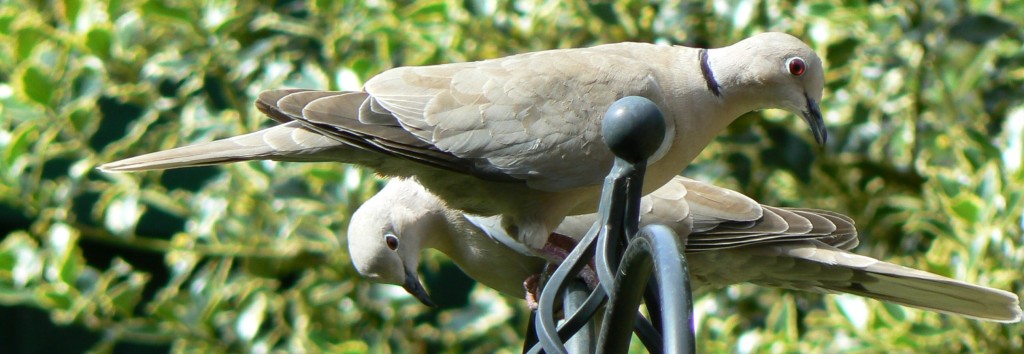
[326] Streptopelia decaocto, Collared Dove
Introduction
Streptopelia decaocto, the Collared Dove, is a smaller dove than our familiar [089] Pigeon and [090] Woodpigeon. Since the Nineteenth Century its range has gradually spread westwards, reaching the UK about 1950 and it is now widespread throughout Britain.
The next two sentences won’t come as a shock to you. It’s not the only species of Streptopelia called a Collared Dove. Formally it’s the Eurasian Collared Dove but we will just call it a Collared Dove.
Taxonomy
Kingdom – Animals
Phylum – Chordates
Class – Aves (Birds)
Clade – Columbimorphae
Order – Columbiformes (Only One Family)
Family – Columbidae (Pigeons and Doves)
Genus – Streptopelia
Scientific Name – Streptopelia decaocto
Name
Ancient Greek roots streptos-peleia mean collar-dove.
Decaocto comes from an Ancient Greek myth that a maid was unhappy that she was paid just 18 coins a year. She begged the gods to let the world know how mean her mistress was and Zeus created a dove that called out deca-octo, which means 18. Its actual call is not much like deca-octo. It’s a three-note call, ‘cuck-KOO-koo’, sometimes mistaken for the call of a Cuckoo.
Description
The Collared Dove is a slender bird unlike the chubby Woodpigeon. Overall, it is mostly a light pinkish buff colour. It has half a collar round its neck, black with a narrow white edge above. The bill and eyes also look black and there are some dark grey parts to its tail feathers.
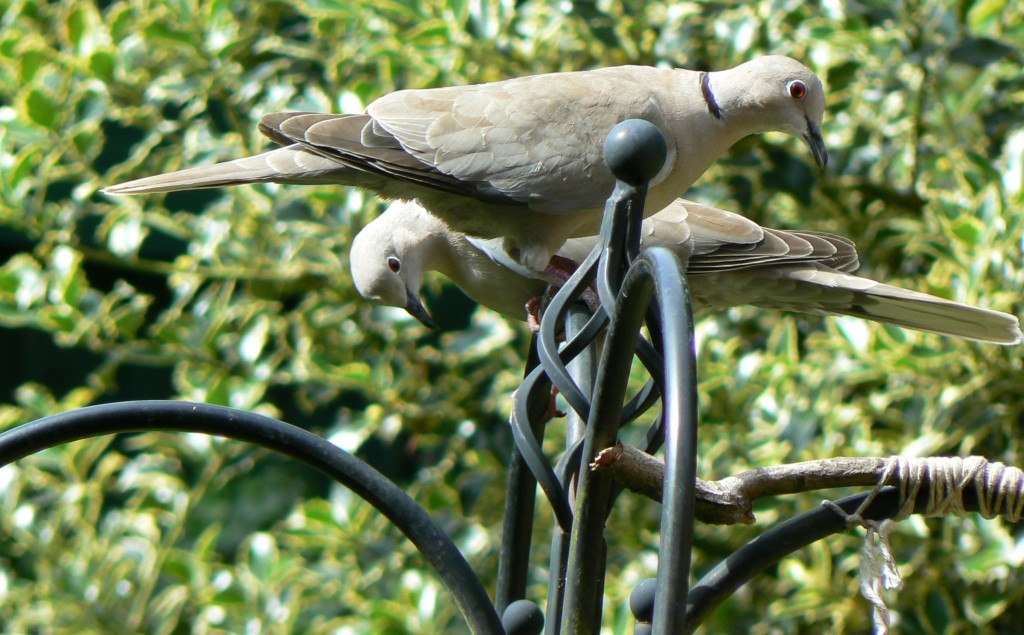

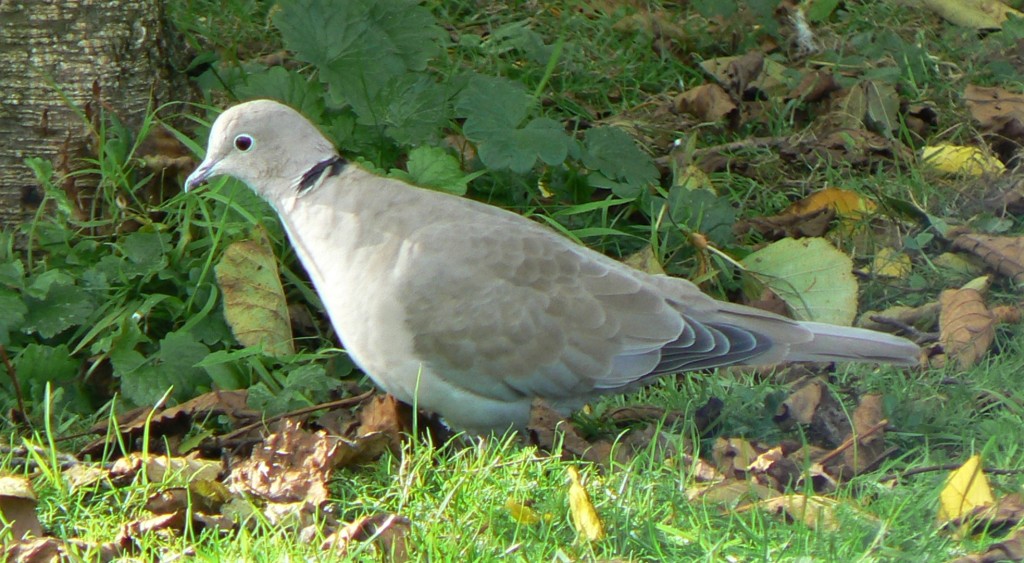

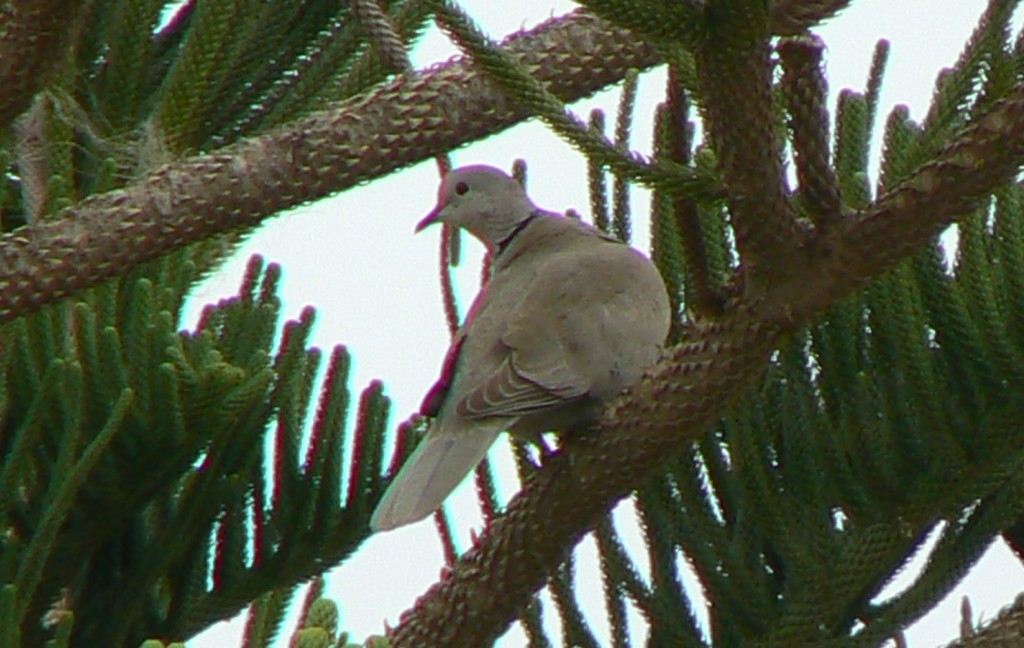
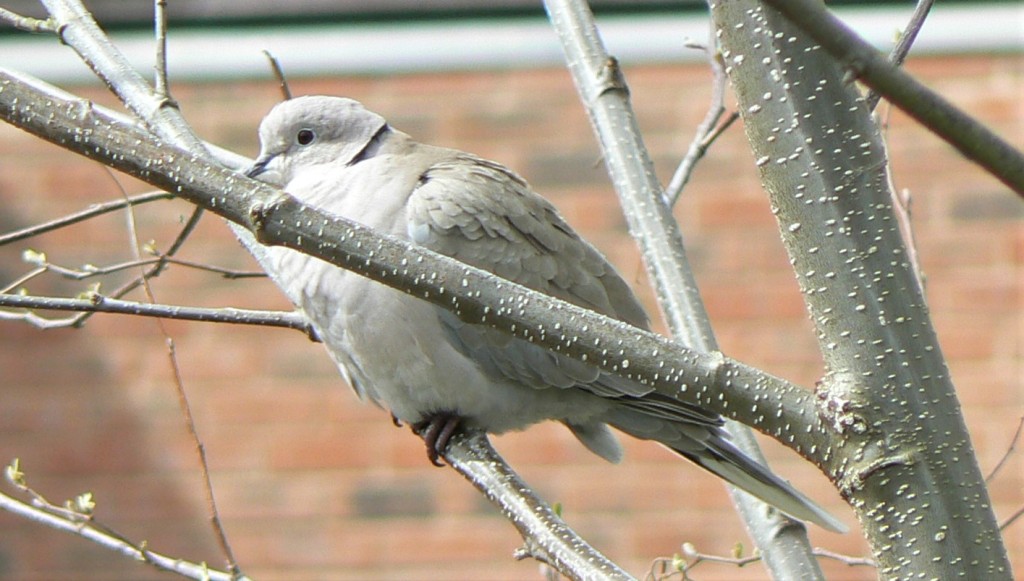


Juvenile birds are slightly browner without the collar.

They feed on cereals, seeds, shoots and insects and may be found near grain stores for livestock or visiting bird feeders.

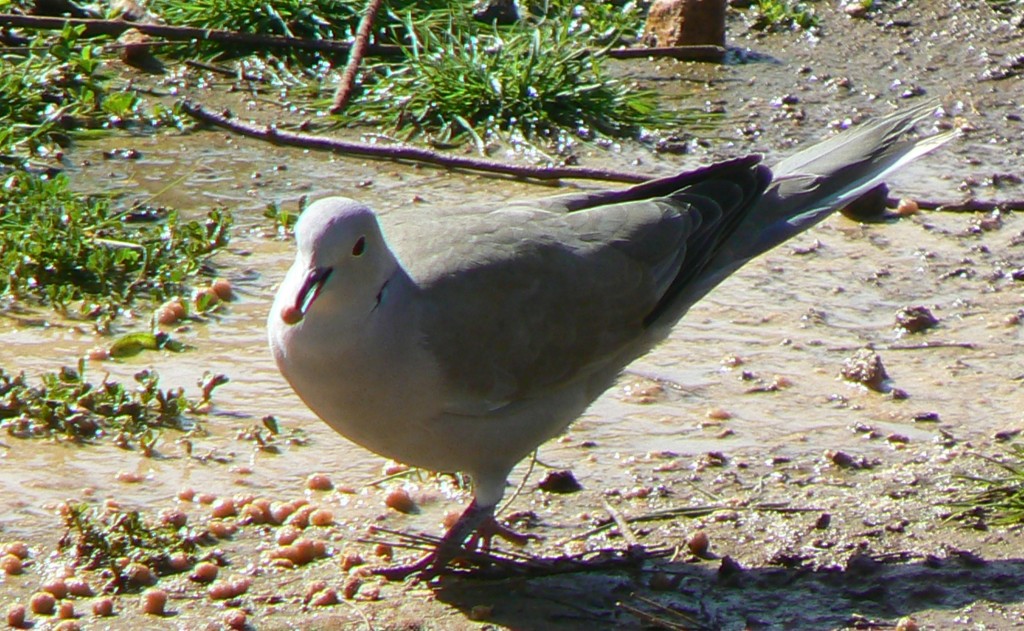
Habitat
In the Eighteenth Century the range of this bird consisted of warm temperate and subtropical areas from Turkey to Southern China. It has spread gradually and is now found across all of Europe including all of the British Isles.
Since about 1970 from a few escaped birds in the Bahamas, it has moved to Florida and is spreading across the USA.
Almost all birds nest and breed fairly close to human habitation,

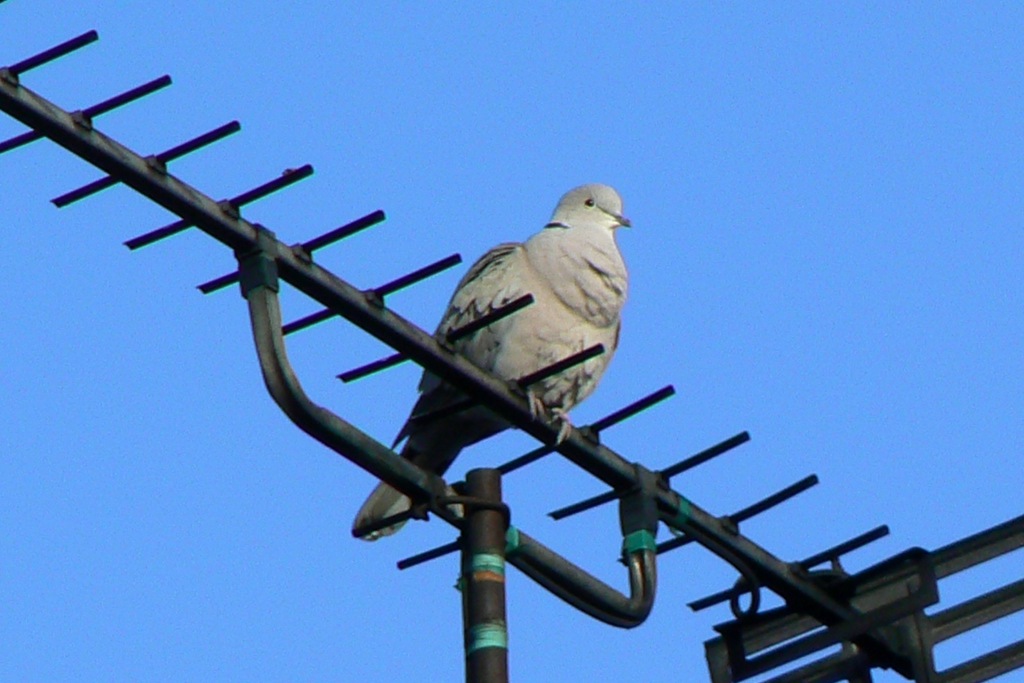
Other Notes
I see these birds much more often on rooftops or street lights rather than at ground level.
See also
Streptopelia turtur, the Turtle Dove, as mentioned in ‘The Twelve Days of Christmas’, has a larger area of black-and white stripes on its neck where the Collared Dove has a collar. Its wings have a chequered pattern of black on a peachy colour. Its name comes from its call ‘turtur.’ Its summer distribution used to cover England and mainland Europe and it winters in a strip of equatorial Africa. Since the late Twentieth Century its numbers have dwindled rapidly all across Europe and it is now very rare in the UK. I have not seen or heard one for at least fifteen years.
